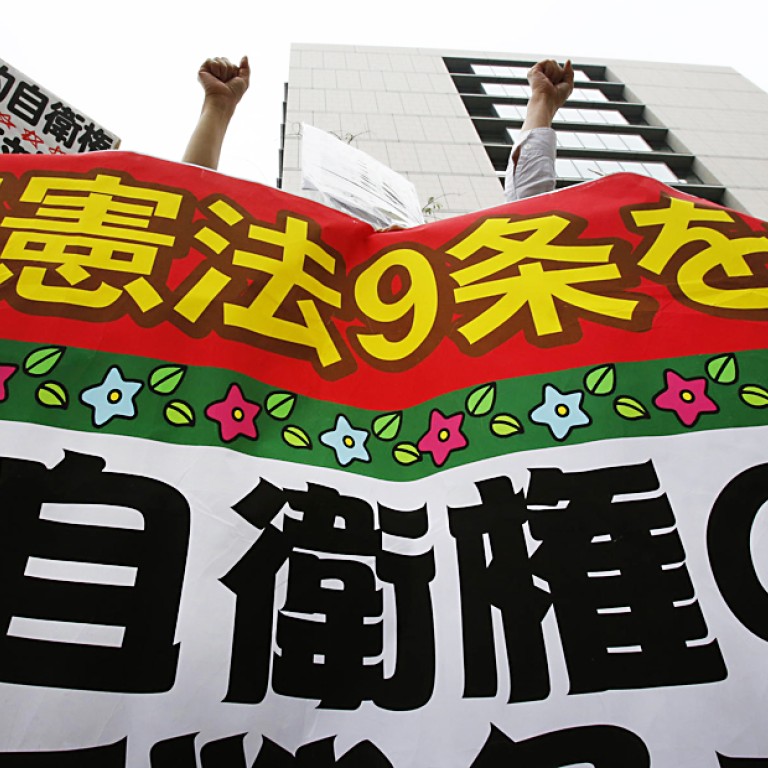
Shinzo Abe on tightrope as he pushes for change to Japan’s defence policy
Japanese prime minister will need to tread carefully when he makes the case for some flexibility in the country's pacifist constitution
Would Japan send its military to defend the Philippines if it was attacked by China? That's the kind of question Prime Minister Shinzo Abe could face as he pushes for a landmark change to security policy.
Abe's private advisers will today present him with a report urging a loosening of legal limits on Japan's military, including an end to a decades-old ban on helping allies under attack that has kept Japanese forces from fighting abroad since the second world war.
This is not a simple matter that can just be pushed through. It’s complex
The report sets the stage for Abe to make a pitch for a historic change in a defence policy that has long been based on the principle that Japan has the right to defend itself with the minimum necessary force, but that combat abroad exceeds the limit.
A lifting of the ban on "collective self-defence" would be welcome to Japan's ally the United States, but would draw criticism from China, ties with which have been damaged by a territorial row and the legacy of Japan's past aggression.
Despite Abe's desire to loosen the limits of the US-drafted charter, doubts remain about how far and how quickly he can go. His Liberal Democratic Party's (LDP) junior partner, the New Komeito, is wary, voters are divided and the LDP's deputy leader is worried about the impact on local polls this year and next. "This is not a simple matter that can just be pushed through," a senior LDP lawmaker said. "It's complex."
Abe's advisers argue that Japan's security environment, including an increasingly assertive China and volatile North Korea, requires a more flexible approach.
Tension in the region grew this month when China positioned an oil rig in an area of the South China Sea also claimed by Vietnam, and spiked again when China demanded that the Philippines release a Chinese fishing boat and its crew seized off Half Moon Shoal in the Spratly Islands, claimed by both countries. Japan itself is locked in a feud with China over Japanese-controlled isles in the East China Sea.
"Looking at China's moves, everyone thinks that in broad terms, allowing the exercise of the right of collective self-defence can't be avoided. But when the debate gets specific, it gets difficult. The question is, what kind of limits should be set?" said a second senior LDP lawmaker who also declined to be identified.
"Could we say a clash between the Philippines and China has nothing to do with Japan? Some would say after the South China Sea comes the East China Sea. Others would say helping the Philippines is going too far."
Examples in the report include protecting a US warship under attack in waters near Japan; mine-sweeping in sea lanes in a conflict zone; intercepting a ballistic missile headed for America; and inspecting vessels supplying arms to a country that has attacked the United States.
The draft also recommends legal changes to facilitate action not directly tied to collective self-defence but where the military has to date been constrained by legal concerns, such as rescuing Japanese overseas, using weapons in UN peace-keeping operations and dispatching troops to low-intensity conflicts that fall short of a full-scale attack on Japan.

